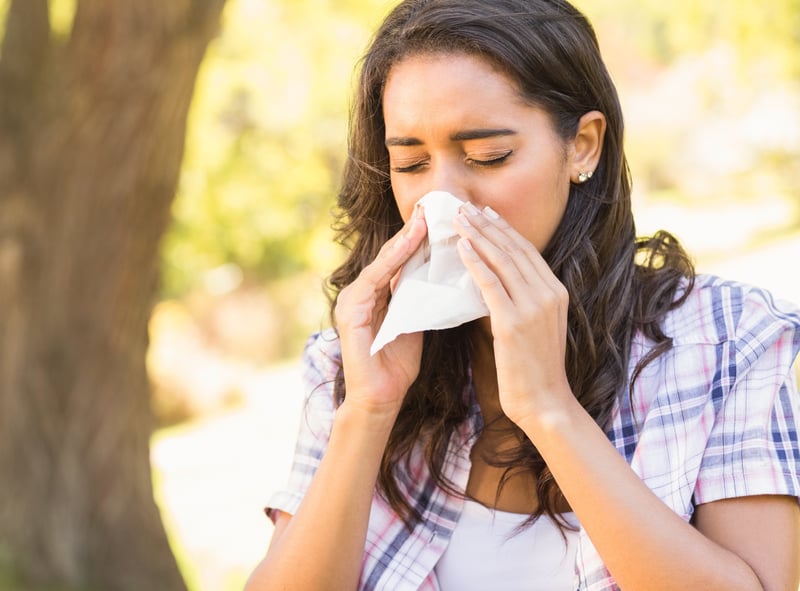Get Healthy!

- Dennis Thompson
- Posted September 21, 2023
Today's COVID Is Increasingly Looking Like a Cold or Flu
Symptoms of mild COVID-19 infection have shifted this season, and now are more akin to those of allergies and the common cold, doctors say.
Many people with COVID-19 now are presenting with upper respiratory symptoms like runny nose, watery eyes and a sore throat, said Dr. Teresa Lovins, an independent family physician in Columbus, Ind.
"A couple of patients told me 'this seems like my allergies, but my allergy med isn't working. And then I start feeling really, really tired and I just can't get my energy up and about,'"Lovins recounted. "And I'm like, 'yeah, we ought to test you for COVID,' and more times than not it's positive."
Fatigue also continues to plague COVID patients, according to Lovins and Dr. William Schaffner, a professor of infectious diseases at Vanderbilt University in Nashville, Tenn.
"Fatigue for 24, 48 even 72 hours appears to be really quite common,"Schaffner said. "People just feel puny, as we say here in the South. They don't all take to their bed, but there's a fair amount of comment about people taking naps just because they feel wiped out."
Other well-established COVID-19 symptoms -- deep cough, a loss of taste or smell, headache, fever -- have become much less common or pronounced, Lovins and Schaffner said.
"What I'm hearing from my clinical colleagues, there is indeed a great deal of upper respiratory symptoms. I hear sore throat mentioned very, very prominently,"Schaffner said. "Also, from many quarters, I hear that the well-publicized loss of taste and smell is less frequent than it was in the early months of the outbreak. It's not really as distinctive nor as common as it used to be."
Infectious disease experts expected this shift in mild illness, given that "virtually everyone has either experienced COVID infection or vaccination or both,"Schaffner said.
"We all have a certain level of immunity, and when we encounter the virus, we're better prepared to fend it off, and that may actually alter the clinical presentation,"he continued.
People also have benefited from mutation trends in COVID, which have tended to favor the Omicron strain and its descendants, Schaffner said.
"Those viruses appear to be somewhat less severe in their presentations,"he pointed out.
But Lovins and Schaffner stressed that people should not take COVID lightly, even if milder infections have become more like the common cold.
Nationwide, more than 20,500 hospitalizations for severe COVID-19 happened the first week in September, according to the U.S. Centers for Disease Control and Prevention's data tracker. That constitutes a nearly 8% increase in hospitalizations.
"I know in our community our hospitalizations have picked up again,"said Lovins, a board member for the American Academy of Family Physicians. "We're seeing not anywhere near what we saw even last fall, but the numbers are up over what they've been since May. They kind of went way down, to no patients with COVID in the hospital during the summer, to now back up again."
COVID-19 remains particularly dangerous for people with existing health problems: older people, those with chronic conditions, the immune-compromised.
"Those folks all, when they become infected, still are more likely to get more serious disease, and that results in an increase in hospitalizations,"Schaffner said.
But he added that there's a reason the CDC recently recommended the new COVID booster for everyone, not just those at high risk.
"This emphasis on the high-risk population is true,"Schaffner said. "However, we still see occasional young, healthy people who get hit with COVID, who wind up in the emergency room and have to be admitted to the hospital. So just because you're completely healthy and young, robust and physically fit does not mean that you can throw off a COVID infection or treat it as trivial. This virus still compels our respect."
The newest COVID booster specifically targets members of the Omicron XBB variant family, Lovins said.
The most common COVID variant, EG.5, belongs to that family. It currently accounts for 1 in 4 COVID infections in the United States, the CDC says.
So does the second most common variant, FL.1.5.1, which accounts for 14% of COVID infections.
"The vaccine that's out, that variant they planned for was an XBB,"Lovins said. "So we've definitely got coverage with this vaccine for what's out there right now."
Lovins also urged people to get the appropriate vaccinations for the flu and RSV (respiratory syncytial virus).
"I have a feeling that we're probably going to see the COVID vaccine become very similar to the flu vaccine, something that will be available every year in the fall,"Lovins said.
More information
HealthDay has more about COVID-19. Johns Hopkins has more about the EG.5 variant.
SOURCES: Teresa Lovins, MD, independent family physician, Columbus, Ind., and board member, American Academy of Family Physicians; William Schaffner, MD, professor, infectious diseases, Vanderbilt University, Nashville, Tenn.; U.S. Centers for Disease Control and Prevention








